This pub is the former Red Lion which closed in 1990. It had been rebuilt in 1962, on the site of a pub of the same name, which dated from the early 1800s.
Prints and text about Market Place.
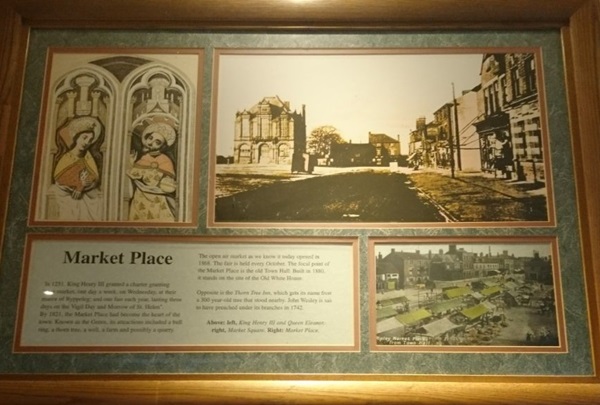
The text reads: In 1251, King Henry III granted a charter granting “One market, one day a week, on Wednesday, at their manor of Ryppeleg; and one fair each year, lasting three days on the Vigil Day and Morrow of St Helen”. By 1821, the Market Place had become the heart of the town. Known as the Green, its attractions included a bull ring, a thorn tree, a well, a farm and possibly a quarry.
The open air market as we know it today opened in 1868. The fair is held every October. The focal point of the Market Place is the Town Hall. Built in 1880, it stands on the site of the Old White House.
Above: left, King Henry III and Queen Eleanor, right, Market Square
Right: Market Place
Text about Ripley Zoo.
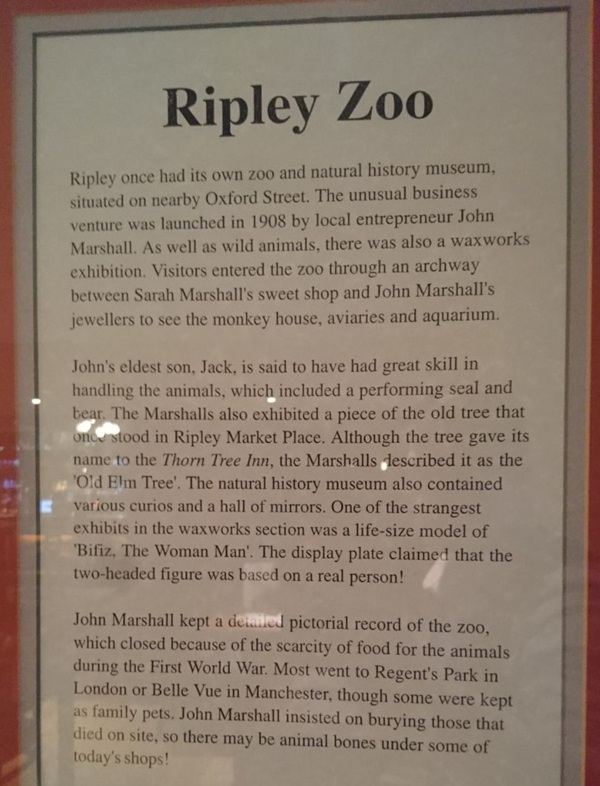
The text reads: Ripley once had its own zoo and natural history museum, situated on nearby Oxford Street. The unusual business venture was launched in 1908 by local entrepreneur John Marshall. As well as wild animals, there was also a waxworks exhibition. Visitors entered the zoo through an archway between Sarah Marshall’s sweet shop and John Marshall’s jewellers to see the monkey house, aviaries and aquarium.
John’s eldest son, Jack, is said to have had great skill in handling the animals, which included a performing seal and bear. The Marshalls also exhibited a piece of the old tree that once stood in Ripley Market Place. Although the tree gave its name to the Thorn Tree Inn, the Marshalls described it as the ‘Old Elm Tree’. The natural history museum also contained various curios and a hall of mirrors. One of the strangest exhibits in the waxworks section was a life-size model of ‘Bifiz, The Woman Man’. The display plate claimed that the two-headed figure was based on a real person!
John Marshall kept a detailed pictorial record of the zoo, which closed because of the scarcity of food for the animals during the first World War. Most went to Regent’s Park in London or Belle Vue in Manchester, though some were kept as family pets. John Marshall insisted on burying those that died on site, so there may be animal bones under some of today’s shops!
Prints and text about the stage and screen.
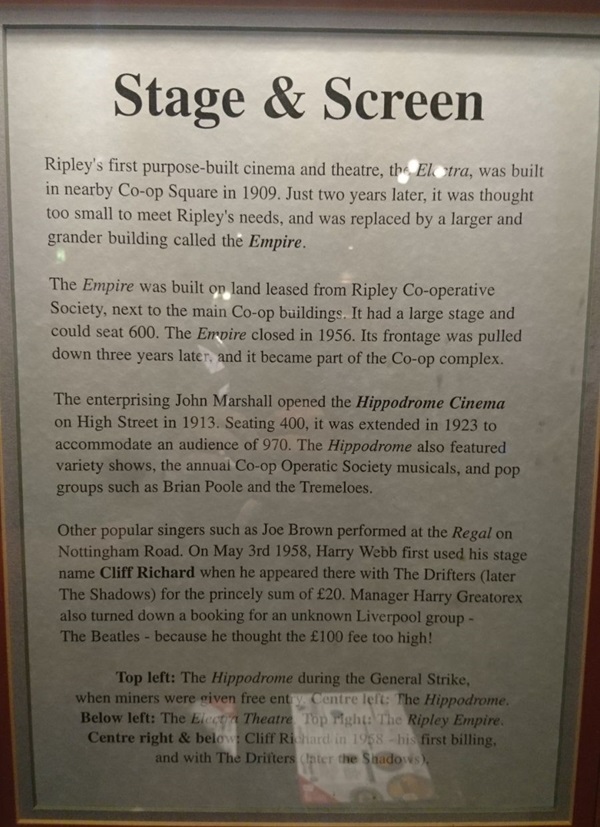
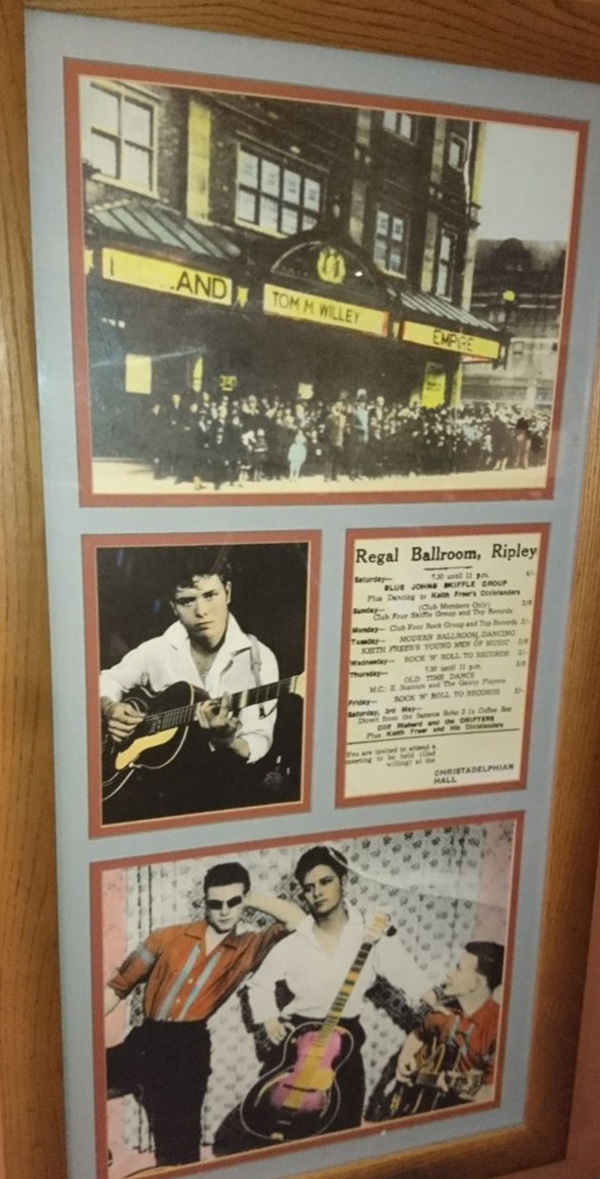
The text reads: Ripley’s first purpose-built cinema and theatre, the Electra, was built in nearby Co-op Square in 1909. Just two years later, it was thought too small to meet Ripley’s needs, and was replaced by a larger and grander building called the Empire.
The Empire was built on land leased from Ripley Co-operative Society, next to the main Co-op buildings. It had a large stage and could seat 600. The empire closed in 1956. Its frontage was pulled down three years later, and it became part of the Co-op complex.
The enterprising John Marshall opened the Hippodrome Cinema on High Street in 1913. Seating 400, it was extended in 1923 to accommodate an audience of 970. The Hippodrome also featured variety shows, the annual Co-op Operatic Society musicals, and pop groups such as Brian Poole and the Tremeloes.
Other popular singers such as Joe Brown performed at the Regal on Nottingham Road. On May 3 1958, Harry Webb first used his stage name Cliff Richard when he appeared there with The Drifters (later The Shadows) for the princely sum of £20. Manager Harry Greatorex also turned down a booking for an unknown Liverpool group - The Beatles – because he thought the £100 fee too high!
Text about Barnes Wallis.
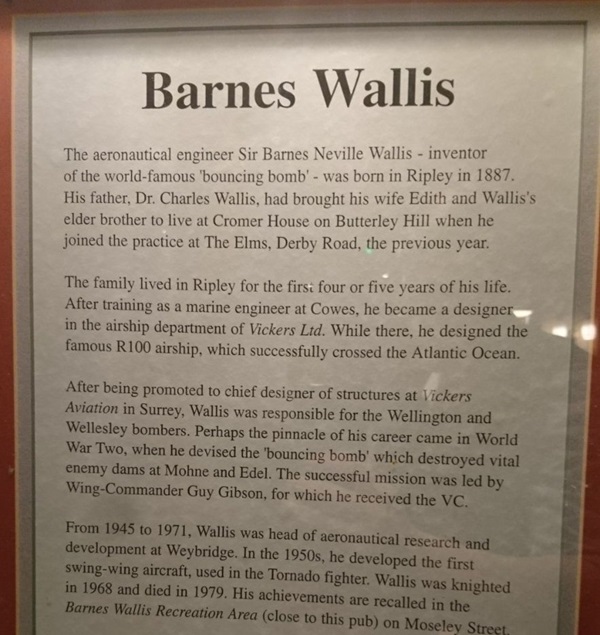
The text reads: The aeronautical engineer Sir Barnes Neville Wallis – inventor of the world-famous ‘bouncing bomb’ – was born in Ripley in 1887. His father, Dr Charles Wallis, had brought his wife Edith and Wallis’s elder brother to live at Cromer House on Butterley Hill when he joined the practice at The Elms, Derby Road, he previous year.
The family lived in Ripley for the first four or five years of his life. After training as a marine engineer at Cowes, he became a designer in the airship department of Vickers Ltd. While there, he designed the famous R100 airship, which successfully crossed the Atlantic Ocean.
After being promoted to chief designer of structures at Vickers Aviation in Surrey, Wallis was responsible for the Wellington and Wellesley bombers. Perhaps the pinnacle of his career came in World War Two, when he devised the ‘bouncing bomb’ which destroyed vital enemy dams at Mohne and Edel. The successful mission was led by Wing-Commander Guy Gibson, for which he received the VC.
From 1945 to 1971, Wallis was head of aeronautical research and development at Weybridge. In the 1950s, he developed the first swing-wing aircraft, used in the Tornado fighter. Wallis was knighted in 1968 and died in 1979. His achievements are recalled in the Barnes Wallis Recreation Area(close to this pub) on Moseley Street.
External photograph of the building – main entrance.
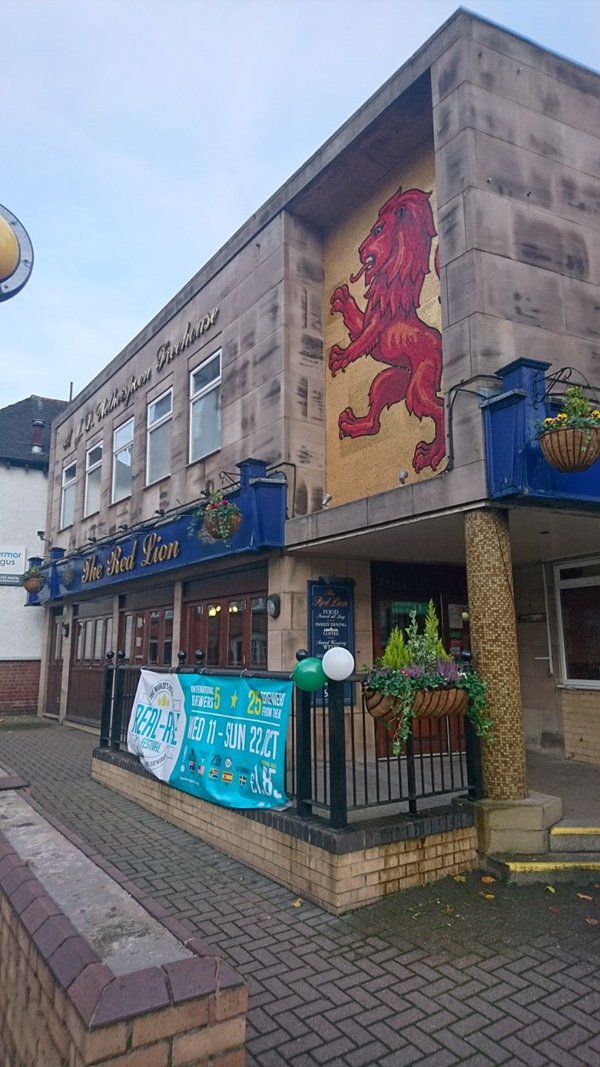
If you have information on the history of this pub, then we’d like you to share it with us. Please e-mail all information to: pubhistories@jdwetherspoon.co.uk